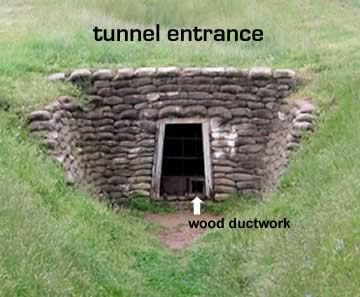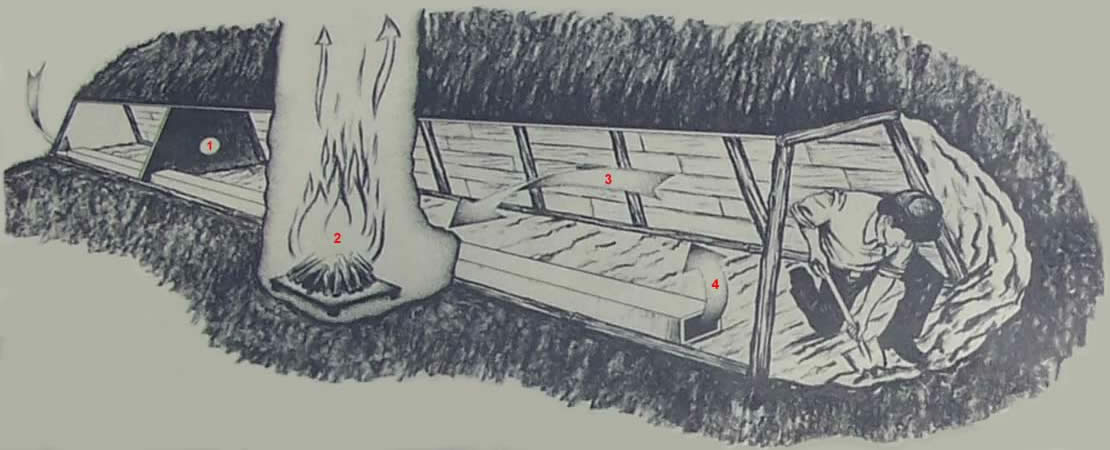The American Civil War - July 30, 1864 - 4:40 a.m.- Petersburg, Virginia: After several weeks of digging, Union soldiers ignited 320 kegs of gunpowder (8,000 pounds) under Confederate lines from a tunnel they had built 20 feet below. The 170 feet long, 120 feet wide, and 30 feet deep crater (still visible today) killed 278 Confederate soldiers from the blast alone. The Battle of the Crater began. If you have seen the movie Cold Mountain, this event was depicted in the first scene and will give you a feel on what really took place and the aftermath.
The 48th Pennsylvania Infantry started digging the 511 foot tunnel on June 25, 1864. These former civilians from the mountains of Pennsylvania knew how to dig a tunnel because of their experience back home working in the coal mines.

What really intrigued me was the way they provided fresh air to the miners. After the mine exceeded 120 feet, canvas was sealed over the entrance of the shaft. A square wooden duct was built from the entrance of the shaft to the area where the miners were digging. About 20 feet down from the entrance, a fire chamber and chimney were built. The heat rising up the chimney flue to the outside would draw the stale air from the mine, forcing fresh air down the ductwork and into the chamber. The chimney, being near the entrance, made the smoke look like it was coming from the union camp. The ducting gave the workers O2 (fresh air) while CO2 (stale air) was being drawn out of the main shaft.

Combustion (2)
Stale Air (3)
Fresh Air (4)
The combustion of the wood is much hotter than the outside (ambient) air, and is less dense. The heat of the combustion rising through the chimney to the outside air causes a draft or draught. This negative pressure causes the air in the tunnel to expel, and draws in the fresh air through the duct. The fire had to be constantly stoked as the tunnel got longer.
The equation for this type of draft would be: DRAFT= (0.65 * tunnel area) √ 2 ( 9.81 * tunnel distance) * (average inside temperature - average outside temperature) / (average inside temperature). This would give you the stack effect or draft flow rate.
"Regular Army wiseacres said it was not feasible - that I could not carry the ventilation that distance without digging a hole to the surface... but, I have succeeded." - Lt. Col Henry Pleasants, 48th Pennsylvania Regiment, July 23, 1864
Lt. Col Henry Pleasants was brevet a Brigadier General after the American Civil War in 1866. The confirmed citation from the U.S. Congress praised his command decisions at Petersburg.
Aftermath - We should note that the actions taken by the Union army after the eruption of the explosion causing the massive crater was a disaster. The Army of the Potomac's leaders commanded their advancing infantry into a pit of death instead of going around the rim of the crater. Though this was not intentional, they (commanders) thought the infantry would be able to climb the walls of the crater. This action occurred just a little over the one-year anniversary of Pickett's Charge at Gettysburg where the Confederate Army commander, Robert E. Lee, assumed his army could perform a similar feat.


